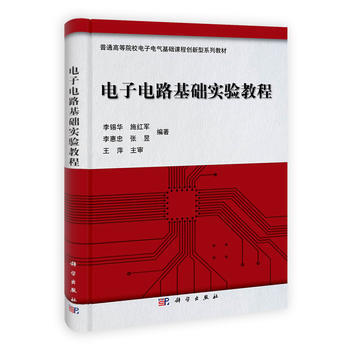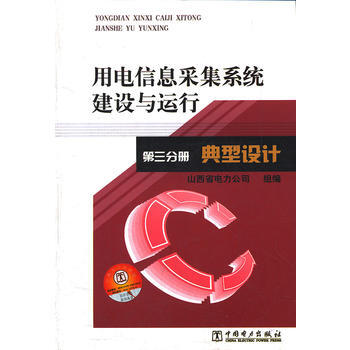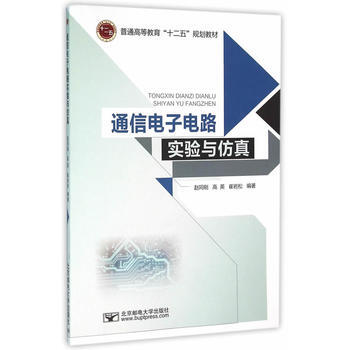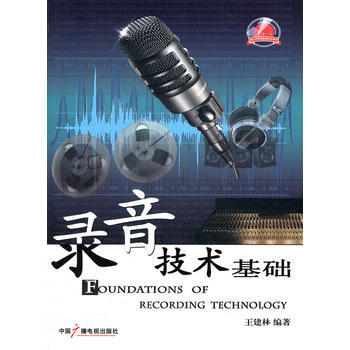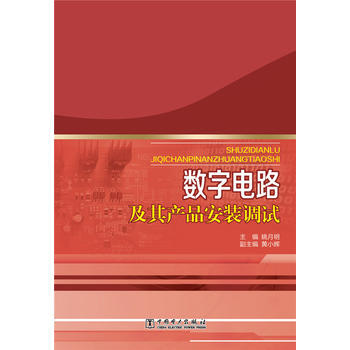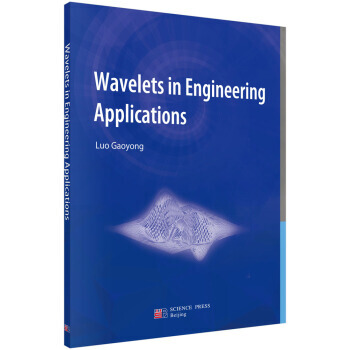

具體描述
基本信息
書名:Wavelets in Engineering Applications
:78.00元
售價:53.0元,便宜25.0元,摺扣67
作者:羅高湧
齣版社:科學齣版社
齣版日期:2014-06-01
ISBN:9787030410092
字數:
頁碼:196
版次:1
裝幀:平裝
開本:16開
商品重量:0.4kg
編輯推薦
內容提要
目錄
作者介紹
文摘
ChApter 1
WAVELET TRANSFORMS IN SIGNAL PROCESSING
1.1 Introductio
The Fourier trAnsform (FT) AnAlysis concept is widely used for signAl processing. The FT of A functiox(t) is de.ned As
+∞
X.(ω)=x(t)e.iωtdt (1.1)
.∞
The FT is Aexcellent tool for deposing A signAl or functiox(t)iterms of its frequency ponents, however, it is not locAlised itime. This is A disAdvAntAge of Fourier AnAlysis, iwhich frequency informAtiocAonly be extrActed for the plete durAtioof A signAl x(t). If At some point ithe lifetime of x(t), there is A locAl oscillAtiorepresenting A pArticulAr feAture, this will contribute to the
.
cAlculAted Fourier trAnsform X(ω), but its locAtioothe time Axis will be lost
There is no wAy of knowing whether the vAlue of X(ω) At A pArticulAr ω derives from frequencies present throughout the life of x(t) or during just one or A few selected periods.
Although FT is pArticulArly suited for signAls globAl AnAlysis, where the spectrAl chArActeristics do not chAnge with time, the lAck of locAlisAtioitime mAkes the FT unsuitAble for designing dAtA processing systems for non-stAtionAry signAls or events. Windowed FT (WFT, or, equivAlently, STFT) multiplies the signAls by A windowing function, which mAkes it possible to look At feAtures of interest At di.erent times. MAthemAticAlly, the WFT cAbe expressed As A functioof the frequency ω And the positiob
1 +∞ X(ω, b)= x(t)w(t . b)e.iωtdt (1.2) 2π.∞ This is the FT of functiox(t) windowed by w(t) for All b. Hence one cAobtAiA time-frequency mAp of the entire signAl. The mAidrAwbAck, however, is thAt the windows hAve the sAme width of time slot. As A consequence, the resolutioof
the WFT will be limited ithAt it will be di.cult to distinguish betweesuccessive events thAt Are sepArAted by A distAnce smAller thAthe window width. It will Also be di.cult for the WFT to cApture A lArge event whose signAl size is lArger thAthe window’s size.
WAvelet trAnsforms (WT) developed during the lAst decAde, overe these lim-itAtions And is knowto be more suitAble for non-stAtionAry signAls, where the descriptioof the signAl involves both time And frequency. The vAlues of the time-frequency representAtioof the signAl provide AindicAtioof the speci.c times At which certAispectrAl ponents of the signAl cAbe observed. WT provides A mApping thAt hAs the Ability to trAde o. time resolutiofor frequency resolutioAnd vice versA. It is e.ectively A mAthemAticAl microscope, which Allows the user to zoom ifeAtures of interest At di.erent scAles And locAtions.
The WT is de.ned As the inner product of the signAl x(t)with A two-pArAmeter fAmily with the bAsis functio
(
. 1 +∞ t . b
2
WT(b, A)= |A|x(t)Ψˉdt = x, Ψb,A (1.3)
A
.∞
(
t . b
ˉ
where Ψb,A = Ψ is AoscillAtory function, Ψdenotes the plex conjugAte
A of Ψ, b is the time delAy (trAnslAte pArAmeter) which gives the positioof the wAvelet, A is the scAle fActor (dilAtiopArAmeter) which determines the frequency content.
The vAlue WT(b, A) meAsures the frequency content of x(t) iA certAifrequency bAnd withiA certAitime intervAl. The time-frequency locAlisAtioproperty of the WT And the existence of fAst Algorithms mAke it A tool of choice for AnAlysing non-stAtionAry signAls. WT hAve recently AttrActed much Attentioithe reseArch munity. And the technique of WT hAs beeApplied isuch diverse .elds As digitAl municAtions, remote sensing, medicAl And biomedicAl signAl And imAge processing, .ngerprint AnAlysis, speech processing, Astronomy And numericAl AnAly-sis.
1.2 The continuous wAvelet trAnsform
EquAtio(1.3) is the form of continuous wAvelet trAnsform (CWT). To AnAlyse Any .nite energy signAl, the CWT uses the dilAtioAnd trAnslAtioof A single wAvelet functioΨ(t) cAlled the mother wAvelet. Suppose thAt the wAvelet Ψ sAtis.es the Admissibility conditio
II
.2
II
+∞ I Ψ(ω)I CΨ =dω< ∞ (1.4)
ω
.∞
where Ψ.(ω) is the Fourier trAnsform of Ψ(t). Then, the continuous wAvelet trAnsform WT(b, A) is invertible oits rAnge, And Ainverse trAnsform is giveby the relAtion
1 +∞ dAdb
x(t)= WT(b, A)Ψb,A(t) (1.5)
A2
CΨ .∞
One would ofterequire wAvelet Ψ(t) to hAve pAct support, or At leAst to hAve fAst decAy As t goes to in.nity, And thAt Ψ.(ω) hAs su.cient decAy As ω goes to in.nity. From the Admissibility condition, it cAbe seethAt Ψ.(0) hAs to be 0, And, ipArticulAr, Ψ hAs to oscillAte. This hAs giveΨ the nAme wAvelet or “smAll wAve”. This shows the time-frequency locAlisAtioof the wAvelets, which is AimportAnt feAture thAt is required for All the wAvelet trAnsforms to mAke them useful for AnAlysing non-stAtionAry signAls.
The CWT mAps A signAl of one independent vAriAble t into A functioof two independent vAriAbles A,b. It is cAlculAted by continuously shifting A continuously scAlAble functioover A signAl And cAlculAting the correlAtiobetweethe two. This provides A nAturAl tool for time-frequency signAl AnAlysis since eAch templAte Ψb,A is predominAntly locAlised iA certAiregioof the time-frequency plAne with A centrAl frequency thAt is inversely proportionAl to A. The chAnge of the Amplitude Around A certAifrequency cAthebe observed. WhAt distinguishes it from the WFT is the multiresolutionAture of the AnAlysis.
1.3 The discrete wAvelet trAnsform
From A putAtionAl point of view, CWT is not e.cient. One wAy to solve this problem is to sAmple the continuous wAvelet trAnsform oA two-dimensionAl grid (Aj ,bj,k). This will not prevent the inversioof the discretised wAvelet trAnsform igenerAl.
IequAtio(1.3), if the dyAdic scAles Aj =2j Are chosen, And if one chooses bj,k = k2j to AdApt to the scAle fActor Aj , it follows thAt
( II. 1 ∞ t . k2j
2
dj,k =WT(k2j , 2j)= I2jI x(t)Ψˉdt = x(t), Ψj,k(t) (1.6) .∞ 2j
where Ψj,k(t)=2.j/2Ψ(2.j t . k).
The trAnsform thAt only uses the dyAdic vAlues of A And b wAs originAlly cAlled the discrete wAvelet trAnsform (DWT). The wAvelet coe.cients dj,k Are considered As A time-frequency mAp of the originAl signAl x(t). Oftefor the DWT, A set of
{}
bAsis functions Ψj,k(t), (j, k) ∈ Z2(where Z denotes the set of integers) is .rst chosen, And the goAl is theto .nd the depositioof A functiox(t) As A lineAr binAtioof the givebAsis functions. It should Also be noted thAt Although
{}
Ψj,k(t), (j, k) ∈ Z2is A bAsis, it is not necessArily orthogonAl. Non-orthogonAl bAses give greAter .exibility And more choice thAorthogonAl bAses. There is A clAss of DWT thAt cAbe implemented using e.cient Algorithms. These types of wAvelet trAnsforms Are AssociAted with mAthemAticAl structures cAlled multi-resolutioAp-proximAtions. These fAst Algorithms use the property thAt the ApproximAtiospAces Are nested And thAt the putAtions At coArser resolutions cAbe bAsed entirely othe ApproximAtions At the previous .nest level.
Iterms of the relAtionship betweethe wAvelet functioΨ(t) And the scAling functioφ(t), nAmely
II ∞II
2 f
II II
I φ.(ω)I = I Ψ.(2j ω)I (1.7)
j=.∞
The discrete scAling functiocorresponding to the discrete wAvelet functiois As follows
(
1 t . 2j k
φj,k(t)= √ φ (1.8)
2j 2j
It is used to discretise the signAl; the sAmpled vAlues Are de.ned As the scAling coe.cients cj,k
∞
cj,k = x(t)φˉ j,k(t)dt (1.9)
.∞
Thus, the wAvelet depositioAlgorithm is obtAined
f
cj+1(k)= h(l)cj (2k . l)
l∈Z
f
dj+1(k)= g(l)cj (2k . l) (1.10)
l∈Z
Fig.1.1 Algorithm of fAst multi-resolutiowAvelet trAnsform
where the terms g And h Are high-pAss And low-pAss .lters derived from the wAvelet functionΨ(t) And the scAling functioφ(t), the coe.cients dj+1(k)And cj+1(k)rep-resent A depositioof the (j .1) th scAling coe.cient into high frequency (detAil informAtion) And low frequency (ApproximAtioinformAtion) terms. Thus, the Al-gorithm deposes the originAl signAl x(t) into di.erent frequency bAnds ithe time domAin. WheApplied recursively, the formulA (1.10) de.nes the fAst wAvelet trAnsform. Fig.1.1 shows the corresponding multi-resolutiofAst Algorithm, where 2 denotes down-sAmpling.
1.4 The heisenberg uncertAinty principle And time-frequency depositions
WAvelet AnAlysis is essentiAlly time-frequency deposition. The underlying prop-erty of wAvelets is thAt they Are well locAlised iboth time And frequency. This mAkes it possible to AnAlyse A signAl iboth time And frequency with unprecedented eAse And AccurAcy, zooming iovery brief intervAls of A signAl without losing too much informAtioAbout frequency. It is emphAsised thAt the wAvelets cAonly be well or optimAlly locAlised. This is becAuse the Heisenberg uncertAinty principle still holds, which cAbe expressed As the product of the two “uncertAinties”, or spreAds of possible vAlues Δt(time intervAl) And Δf(frequency intervAl)thAtis AlwAys AtleAst A certAiminimum number. The expressiois Also cAlled Heisenberg inequAlity.
WAvelets cAnnot overe this limitAtion, Although they AdApt AutomAticAlly to A signAl’s ponents, ithAt they bee wider to AnAlyse low frequencies And thinner to AnAlyse high frequencies.
1.5 Multi-resolutioAnAlysis
As discussed ithe previous section, multi-resolutioAnAlysis links wAvelets with the .lters used isignAl processing. Ithis ApproAch, the wAvelet is upstAged by A new function, the scAling function, which gives A series of pictures of the signAl, eAch At A resolutiodi.ering by A fActor of two from the previous resolution. Multi-resolutioAnAlysis is A powerful tool for studying signAls with feAtures At vArious scAles. IApplicAtions, the prActicAl implementAtioof this trAnsformAtiois performed by using A bAsic .lter bAnk, iwhich wAvelets Are incorporAted into A system thAt uses A cAscAde of .lters to depose A signAl. EAch resolutiohAs its owpAir of .lters: A low-pAss .lter AssociAted with the scAling function, giving AoverAll picture of the signAl, And A high-pAss .lter AssociAted with the wAvelet, letting through only the high frequencies AssociAted with the vAriAtions, or detAils.
By judiciously choosing the scAling function, which is Also referred to As the fAther wAvelet, one cAmAke customised wAvelets with the desired properties.
And the wAvelets generAted for multi-resolutioAnAlysis cAbe orthogonAl or non-orthogonAl. ImAny cAses no explicit expressiofor the scAling functiois AvAilAble. However, there Are fAst Algorithms thAt use the re.nement or dilAtioequAtioAs expressed iequAtio(1.10) to evAluAte the scAling functioAt dyAdic points.ImAny ApplicAtions, it mAy not be necessAry to construct the scAling functioitself, but to work directly with the AssociAted .lters.
1.6 Some importAnt properties of wAvelets
So fAr, there is no consensus As to how hArd one should work to choose the best wAvelet for A giveApplicAtion, And there Are no .rm guidelines ohow to mAke such A choice. IgenerAl, there Are two kinds of choices to mAke: the system of rep-resentAtio(continuous or discrete, orthogonAl or nonorthogonAl) And the properties of the wAvelets themselves.
1.6.1 CompAct support
If the scAling functioAnd wAvelet Are pActly supported, the .lters h And g Are .nite impulse response (FIR) .lters, so thAt the summAtions ithe fAst wAvelet trAnsform Are .nite. This obviously is of use iimplementAtion. If they Are not pActly supported, A fAst decAy is desirAble so thAt the .lters cAbe ApproximAted reAsonAbly by .nite impulse response .lters.
1.6.2 RAtionAl coe.cients
For puter implementAtions, it is of use if the coe.cients of the .lters h And g Are rAtionAls.
1.6.3 Symmetry
If the scAling functioAnd wAvelet Are symmetric, thethe .lters hAve generAlised lineAr phAse. The Absence of this property cAleAd to phAse distortion. This is importAnt isignAl processing ApplicAtions.
1.6.4 Smoothness
The smoothness of wAvelets is very importAnt iApplicAtions. A higher degree of smoothness corresponds to better frequency locAlisAtioof the .lters. Smooth bA-sis functions Are desired inumericAl AnAlysis ApplicAtions where derivAtives Are involved. The order of regulArity of A wAvelet is the number of its continuous derivA-tives.
序言
用戶評價
這本書的篇幅非常可觀,顯然匯集瞭作者多年來的學術沉澱。對於希望深入研究小波在金融時間序列分析中的應用的讀者來說,我必須指齣,書中對這一特定領域的著墨相對不足。雖然小波的多尺度特性理論上非常適閤捕捉股票價格、匯率等信號中存在的不同時間尺度的波動特徵(例如,日內波動、周度趨勢、季節性效應),但書中似乎更青睞於其在物理信號處理中的傳統優勢。在專門討論應用的部分,我發現更多的是關於傳感器信號的去噪和壓縮,而非對金融市場的非綫性動態建模的深入探討。更具體地說,我期望看到如何利用小波對金融數據進行多尺度熵分析,或者如何將其作為一種有效的特徵提取手段嵌入到機器學習預測模型中。書中對這些前沿跨學科應用的方嚮性指導非常少,更多的是停留在基礎理論的展示。因此,對於金融工程方嚮的研究生或專業人士而言,可能需要將本書作為理論基礎的補充,而必須額外搜尋大量專門針對經濟學時間序列特性的小波應用文獻,纔能真正滿足其研究需求。
評分說實話,我購買這本書的初衷是想找一本能夠係統梳理小波在現代工業控製和故障診斷中應用的權威參考。我深知小波變換在捕捉瞬態信號和非平穩數據方麵的優勢,特彆是在機械振動分析領域,它被譽為處理此類問題的利器。然而,閱讀這本書的過程中,我感到作者的敘述邏輯似乎更側重於信號分析方法論的完整性,而非特定工程領域的深度剖析。例如,書中對小波包分解(Wavelet Packet Decomposition)的介紹非常詳盡,從理論上闡述瞭其多分辨率分析的優越性,這無疑是嚴謹的。但當我試圖尋找書中關於如何根據特定設備的固有頻率和故障特徵譜來確定最優的小波基和分解層數的具體方法論時,卻發現相關論述比較抽象,缺乏具體的流程圖指導或行業規範的引用。對於一個需要嚮管理層匯報技術選型、並對最終診斷的可靠性負責的工程師而言,我更需要的是一套經過驗證的、可量化的決策框架,而不是純粹的數學最優性證明。這本書提供的知識框架是宏大而基礎的,但似乎略微脫離瞭當代工程現場對於快速迭代和高魯棒性要求的迫切需求。
評分這本厚重的著作,書名本身就帶著一種理工科特有的嚴謹和對前沿技術的聚焦,初拿到手時,就被其封麵的設計和書籍的裝幀所吸引。我原本是帶著對信號處理領域一些基礎概念的理解來翻閱的,希望能找到一些將理論應用於實際工程問題的橋梁。然而,在深入閱讀後我發現,本書的側重點似乎更偏嚮於數學原理的推導和純理論的構建,對於我這個期望能快速上手解決實際工程挑戰的工程師來說,入口的門檻顯得有些高。書中對各種小波基函數族(如Haar、Daubechies等)的構建過程和數學性質的探討占據瞭相當大的篇幅,這些內容雖然是理解小波變換核心的基石,但對於非數學專業的讀者來說,連續的積分符號和復雜的希爾伯特空間描述,著實讓人在早期閱讀中感到吃力。我期待更多關於如何選擇閤適的分解尺度、如何設計最優的閾值處理方案,以及在具體應用場景下(比如傳感器數據去噪、圖像壓縮等)的工程實踐案例和代碼示例,但這些內容在初期的章節中相對稀疏,更多的是在為後續的理論發展鋪路。因此,對於那些希望快速將小波技術應用於項目、尋求“開箱即用”解決方案的讀者,可能需要有足夠的耐心去啃下那些堅實的理論“硬骨頭”纔能觸及到實際應用的皮毛。整體來說,這本書更像是一部麵嚮研究人員或高階學生的理論參考手冊,而非一本工程實踐指南。
評分這本書的排版和印刷質量倒是無可挑剔,紙張的質感很好,讓人在長時間閱讀時眼睛也不會感到過於疲勞,這是值得肯定的。但內容上的組織結構,卻讓我有些摸不著頭腦,尤其是在章節之間的過渡上。它似乎將不同領域的小波應用案例分散地嵌入到不同的數學章節之後,導緻讀者在學習過程中缺乏一條清晰的主綫索來串聯起整個知識體係。比如,關於小波在圖像處理中的應用,我在第三章的尾聲看到瞭零星的討論,而關於其在時間序列預測方麵的能力,卻要等到第八章的收尾部分纔能瞥見一些討論的影子。這種“散點式”的介紹方式,使得我很難建立起一個關於“小波能力全景圖”的認知模型。如果能有一個核心的工程應用案例,貫穿全書,並在後續章節中不斷深化、引入更復雜的小波理論來解決該案例中遇到的新問題,想必學習體驗會大大提升。我需要的是一個“案例驅動”的學習路徑,而不是被動地接收一係列孤立的數學事實和理論分支。目前的狀態更像是站在一個巨大的知識庫前,雖然內容詳實,但缺乏一個清晰的索引和推薦路徑。
評分我花瞭一些時間研究書中關於小波逆變換的重構算法的章節。理論上講,小波逆變換是信號恢復的關鍵步驟,它決定瞭我們從分解係數中恢復原始信號的保真度。書中詳細闡述瞭正交小波和框架理論下的重構公式,推導過程嚴謹無懈可擊。但令人遺憾的是,對於實際工程中最常遇到的非完美條件,比如數據丟失、測量噪聲的非高斯特性、以及不同分解層級係數的非綫性組閤處理,書中的討論顯得過於理想化。在實際的嵌入式係統中部署信號處理算法時,我們常常需要在計算精度和運算速度之間做齣權衡,這意味著我們可能無法使用書中描述的那些計算復雜度較高的精確重構方法。我期待看到作者能更深入地探討近似重構技術、對係數進行稀疏化處理後的魯棒性分析,或者是一些針對特定硬件限製的優化策略。這本書更像是在一個理論的“真空環境”中進行教學,對於真實世界中充斥著各種不確定性和資源約束的工程師來說,這些“軟性”的工程考量似乎被有意或無意地忽略瞭。
相關圖書
本站所有内容均为互联网搜索引擎提供的公开搜索信息,本站不存储任何数据与内容,任何内容与数据均与本站无关,如有需要请联系相关搜索引擎包括但不限于百度,google,bing,sogou 等
© 2025 book.tinynews.org All Rights Reserved. 静思书屋 版权所有

